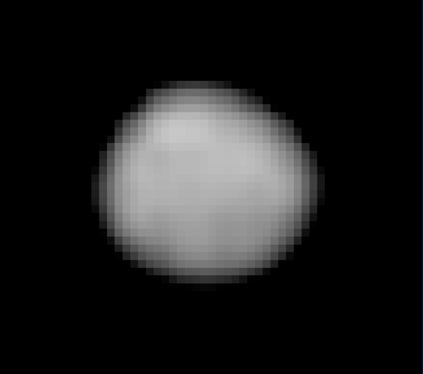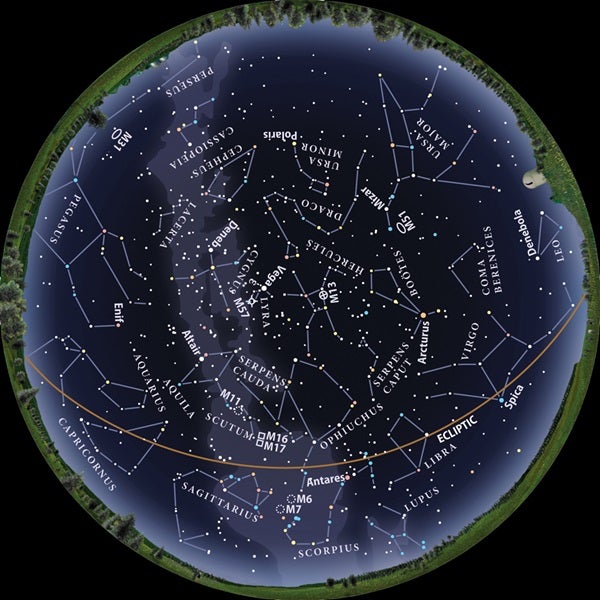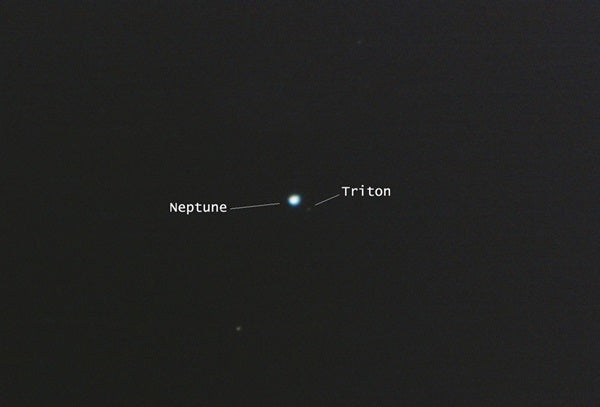Friday, August 19
• You’ll want to keep your eyes on the western evening sky all week. A trio of bright planets — Mercury, Venus, and Jupiter — lurk low in the twilight, forming an elegant triangle that changes shape with each passing day. Use brilliant Venus as your guide to the other two. From mid-northern latitudes this evening, the magnitude –3.8 planet stands 4° above the horizon 30 minutes after sunset. Jupiter, shining at magnitude –1.7, appears 8° to Venus’ upper left, while magnitude 0.3 Mercury lies 4° below Jupiter. You’ll need a clear, unobstructed horizon to see the three worlds, and binoculars will help pull Mercury out of the twilight glow.
Saturday, August 20
• Asteroid 2 Pallas reaches opposition and peak visibility today. The second-largest object orbiting between Mars and Jupiter glows at magnitude 9.2, bright enough to show up through almost any telescope. You can find it on the border between Pegasus and Equuleus, 4° due west of 2nd-magnitude Enif (Epsilon [e] Pegasi), the star that marks the nose of Pegasus the Winged Horse. The lovely globular star cluster M15 lies 2.5° north and a touch east of Pallas. The three objects lie about halfway to the zenith in the southeastern sky after darkness falls.
Sunday, August 21
• Look toward the south-southwest during evening twilight and you can’t miss Mars. The Red Planet shines brightly at magnitude –0.4 and remains visible until it dips below the horizon around midnight local daylight time. Mars resides on the border between Scorpius and Ophiuchus, crossing from the former to the latter constellation today.
• The Moon reaches perigee, the closest point in its orbit around Earth, at 9:19 p.m. EDT. It then lies 228,074 miles (367,050 kilometers) away from us.
Monday, August 22
• The constellations Ursa Major the Great Bear and Cassiopeia the Queen lie on opposite sides of the North Celestial Pole, so they pivot around the North Star (Polaris) throughout the course of the night and the year. In late August and early September, these two constellations appear equally high as darkness falls. You can find Ursa Major and its prominent asterism, the Big Dipper, about 30° above the northwestern horizon. Cassiopeia’s familiar W-shape, which currently lies on its side, appears the same height above the northeastern horizon. As the night progresses, Cassiopeia climbs above Polaris while the Big Dipper swings below it.
Tuesday, August 23
• The three evening planets form a pretty isosceles triangle above the western horizon tonight. Jupiter stands highest and lies some 4° from both Mercury and Venus, while the two inner planets appear 6° apart.
• The western twilight vista isn’t the only exciting one happening this evening. As those three planets set, shift your gaze about 25° above the south-southwestern horizon. There you will find fiery Mars flanked by golden Saturn some 4° above it and ruddy Antares 2° below it. The two bright planets form a straight line with the 1st-magnitude star tonight.
Wednesday, August 24
• Last Quarter Moon occurs at 11:41 p.m. EDT. It rises around midnight local daylight time and climbs high in the southeast by the time twilight starts to paint the sky. Earth’s only natural satellite lies next to the Hyades star cluster in the constellation Taurus the Bull.
Thursday, August 25
• Mars passes 4° due south of Saturn today. The Red Planet shines twice as bright as its ringed companion, and the two make a stunning pair with the naked eye and through binoculars. Both are worth examining through a telescope as well. Mars’ sports an orange-red disk that spans 11″ and shows several subtle dark markings. Saturn measures 17″ across while its dramatic ring system stretches 38″ and tilts 26° to our line of sight.
Friday, August 26
• Distant Neptune reaches opposition and peak visibility one week from today, but the view now is essentially the same. The ice giant planet rises during evening twilight and climbs nearly halfway to the zenith in the southern sky by 1:30 a.m. local daylight time. The magnitude 7.8 planet lies in Aquarius, 1.1° southwest of 4th-magnitude Lambda (l) Aquarii. You’ll need binoculars to spy Neptune and a telescope to see its blue-gray disk, which spans 2.4″.
Saturday, August 27
• Venus and Jupiter lie closer to each other today than at any time since May 2000. At their tightest, just 4.2′ separate them. Unfortunately, this happens in late afternoon from North America. By twilight, the two worlds have pulled slightly apart — 5.5′ from the East Coast and 12.1′ from the West Coast. Still, that’s close enough that many people will see the two merge into one. Binoculars will provide spectacular views, clearly splitting the pair and revealing Mercury 5° to their lower left and just above the horizon. Most telescope-eyepiece combinations will show Venus and Jupiter in the same field, with Jupiter spanning 31″ and Venus 11″.
Sunday, August 28
• Evenings this week are great times to explore the constellation Sagittarius the Archer. This star group lies due south and at peak altitude around 9 p.m. local daylight time, just as the last vestiges of twilight fade away. The brightest stars within the constellation form the shape of a teapot — a distinctive asterism once you’ve found it. The central regions of the Milky Way pass through Sagittarius, so it’s always worth exploring the area through binoculars or a telescope.












